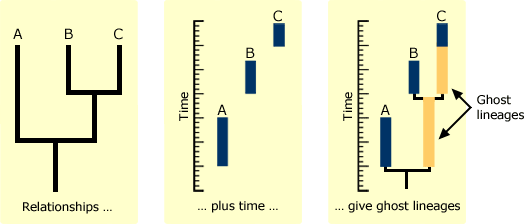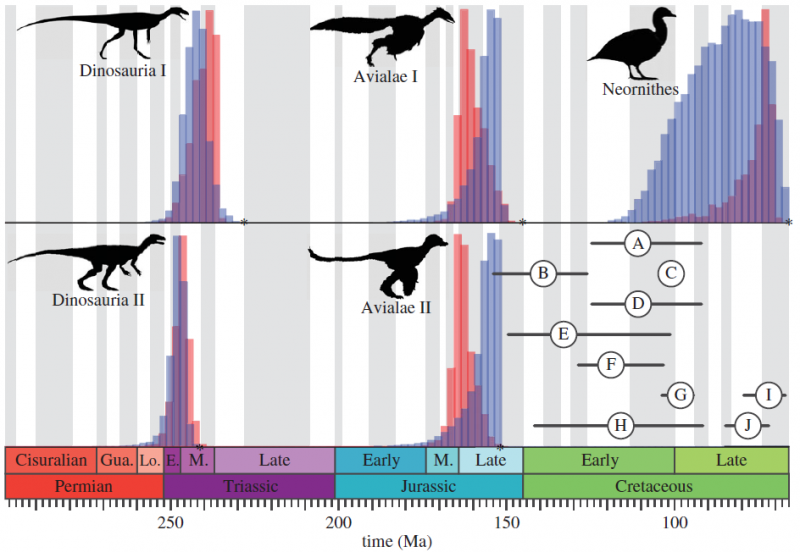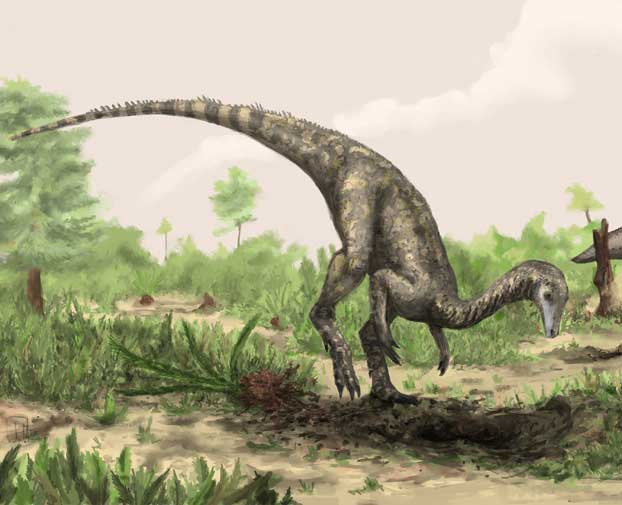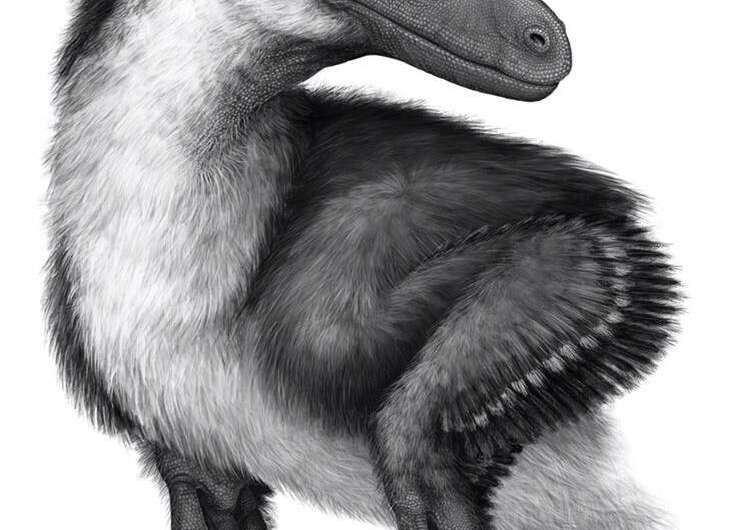How and why to date a dinosaur

You might think dating dinosaurs would be an easy task, but in reality it's actually quite difficult. We date dinosaurs based on where we find their fossils, using the ages of the rocks that they're found in. This means that the 'ages' of different dinosaurs is actually indirect and constrained by how well we're able to date the rocks they were found in.
Ghosts in the machine
As well as this, we know that the occurrences of dinosaur fossils are not accurate representations of their age either. If we know one dinosaur species A was around 120 million years ago, and its closest relative species B known only 100 million years ago, then species B must have existed 120 million years earlier too as they must have shared an origination time due to the way speciation works – we just haven't found any fossils of it during this 20 million year gap though. And we call these ghost ranges or lineages.
What these ghost ranges do, when combined with trees that illustrate the relationships between different organisms, is alter the timings or dates of important events based on exactly how we time-scale the trees and the ghost and true ranges of species.
Why date a dinosaur?
This uncertainty in dating and the methods we use actually has quite important implications for significant events in the evolutionary history of dinosaurs. A team led by Graeme Lloyd of Macquarie University, Australia, recently set out to investigate three questions:

- What was the origination time for Dinosauria (all dinosaurs)?
- When did the earliest birds originate?
- When did crown birds (the group that includes all modern birds) originate?
They used a cadre of time-scaling methods on a brand new evolutionary tree for all dinosaurs, making this the best test of these questions so far. So what did they all discover?
Whence came thee, dinosaur
What was the first dinosaur? That's a tough question, and the reality is we'll probably never actually know. The fossil record preserves little fragments and snapshots of life through time, so while we may never find the first real dinosaur, we can have a good whack at what the earliest dinosaur species was based on what the fossil record yields to us.

As with all good things in palaeontology, this is still up for debate too. A reasonably new species to science called Nyasasaurus might be the earliest dinosaur we know of, or just outside the group and actually what we call a dinosauriform. Depending on this uncertainty, the origin of Dinosauria seems to have most likely occurred in the Early or Middle Triassic, much earlier than the oldest fossils might suggest.
As with the first dinosaurs, the contender for the earliest bird is still up for debate, with researchers unable to pick between Archaeopteryx and the more recently discovered Aurornis, which might be a troodontid. Irrespective of this, the origin of the earliest birds, the clade Avialae, seems to hone in on around a Middle to Late Jurassic age, so around 160-145 million years ago. This is fairly close to when we see the oldest potential bird fossils, and some of the oldest evidence of feathered dinosaurs.
Birds of a feather
The group that includes all modern birds, Aves, or Neornithes, is what we call the 'crown group' for birds. Other dinosaurs like Triceratops belong on the stem of this group, and can actually be considered as 'stem birds'. The origin of Neornithes is the most uncertain of all three groups analysed, stretching from the end of the Cretaceous around 66 million years ago all the way until the middle Early Cretaceous, around 120 million years ago. The reason for this uncertainty is simply due to the state of the fossil record during the Late Cretaceous, in which the taxonomy of some species is quite difficult to assess.

Importantly, all of these new estimates seem to post-date traditional estimates for the origins of these groups that rely mostly on simple occurrence dates of the fossils, and don't account for their evolutionary relationships.
This is important for evolutionary studies as it means that we can now more accurately assess the times of important steps in the global tree of life, and apply these to our large-scale understanding of the macroevolution of life on Earth.
Provided by Public Library of Science
This story is republished courtesy of PLOS Blogs: blogs.plos.org.





















